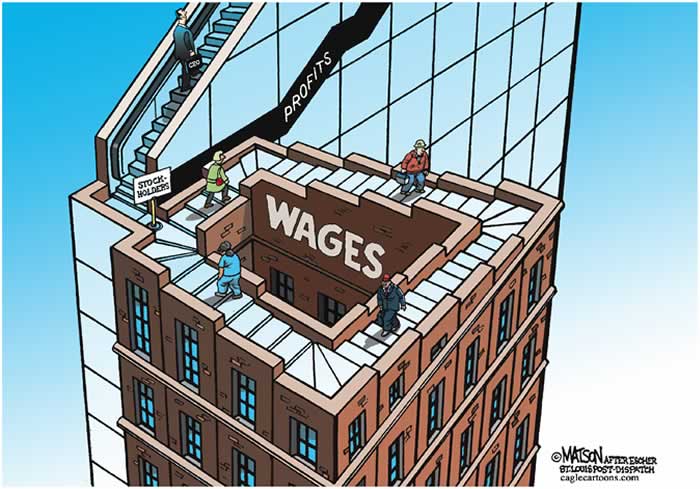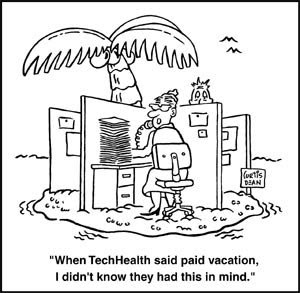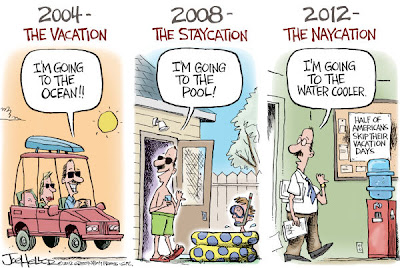signalmankenneth
Verified User
From MSN Money
Pensions!
Pensions used to be the gold standard of American government and corporate retirement plans.
No more.
American pensions have been circling the drain for decades as Wall Street companies have tried to shed their high costs for much more bottom-line-friendly 401ks, which put the onus on the worker. Between 1985 and 2012, the U.S. has lost roughly 85,000 pension plans, write Donald Bartlett and James Steele in their book, "The Betrayal of the American Dream."
The number of Fortune 100 companies that offer only a 401k or similar plan and no traditional or hybrid pension plan has been rocketing, too. In 1998, only 10 members offered just a 401k. That figure reached 27 by 2004, 53 by 2008, 63 by 2010 and 70 as of last year. (Damn Shame!)

Real Wages!
While workers at McDonald's (MCD) and Wal-Mart (WMT) have made headlines protesting minimum wages, the issue of low pay is much more widespread.
America's median wage has dropped to levels not seen since 1998, according to data from the Social Security Administration released in October.
Half of U.S. workers made less than $27,519 in 2012, about four bucks less than they earned in 2011 -- but nearly $1,000 off median wages' all-time peak in 2007. Meanwhile, total real wages per American were 6 percent off their 2007 levels.
Of course, the other half of the coin is doing much better, especially as you reach the upper crust. In 2012, there were 27 percent more Americans making more than $5 million than in 2011, and total wages for this group grew by 40 percent.

Paid vacation and holiday time!
While paid holidays and vacations in the U.S. are far from completely vanishing, they're on the decline, and America's allotment looks paltry compared to the rest of the developed world.
Bureau of Labor Statistics data says 77 percent of Americans receive paid vacation days. That's actually down from two decades ago, when that number stood at 80 percent. That number is especially weighed down by full-time workers at small businesses (100 workers or fewer), where 69 percent receive paid vacation, and the nation's private part-time workers, only 35 of which receive any sort of paid vacation.
The Center for Economic Policy and Research points out that the U.S. "is the only advanced economy in the world that does not guarantee its workers paid vacation." While American workers on average do receive 10 paid vacation days and 6 paid holidays, none of that is legally mandated. That compares poorly to most developed European nations and Australia, where a total of at least 20 days of paid holidays and vacation are required.
Moreover, the U.S. is the only country among 34 Organisation for Economic Cooperation and Development members that doesn't mandate paid maternity leave, putting them behind countries such as Malta, New Zealand and Greece.


Pensions!
Pensions used to be the gold standard of American government and corporate retirement plans.
No more.
American pensions have been circling the drain for decades as Wall Street companies have tried to shed their high costs for much more bottom-line-friendly 401ks, which put the onus on the worker. Between 1985 and 2012, the U.S. has lost roughly 85,000 pension plans, write Donald Bartlett and James Steele in their book, "The Betrayal of the American Dream."
The number of Fortune 100 companies that offer only a 401k or similar plan and no traditional or hybrid pension plan has been rocketing, too. In 1998, only 10 members offered just a 401k. That figure reached 27 by 2004, 53 by 2008, 63 by 2010 and 70 as of last year. (Damn Shame!)

Real Wages!
While workers at McDonald's (MCD) and Wal-Mart (WMT) have made headlines protesting minimum wages, the issue of low pay is much more widespread.
America's median wage has dropped to levels not seen since 1998, according to data from the Social Security Administration released in October.
Half of U.S. workers made less than $27,519 in 2012, about four bucks less than they earned in 2011 -- but nearly $1,000 off median wages' all-time peak in 2007. Meanwhile, total real wages per American were 6 percent off their 2007 levels.
Of course, the other half of the coin is doing much better, especially as you reach the upper crust. In 2012, there were 27 percent more Americans making more than $5 million than in 2011, and total wages for this group grew by 40 percent.

Paid vacation and holiday time!
While paid holidays and vacations in the U.S. are far from completely vanishing, they're on the decline, and America's allotment looks paltry compared to the rest of the developed world.
Bureau of Labor Statistics data says 77 percent of Americans receive paid vacation days. That's actually down from two decades ago, when that number stood at 80 percent. That number is especially weighed down by full-time workers at small businesses (100 workers or fewer), where 69 percent receive paid vacation, and the nation's private part-time workers, only 35 of which receive any sort of paid vacation.
The Center for Economic Policy and Research points out that the U.S. "is the only advanced economy in the world that does not guarantee its workers paid vacation." While American workers on average do receive 10 paid vacation days and 6 paid holidays, none of that is legally mandated. That compares poorly to most developed European nations and Australia, where a total of at least 20 days of paid holidays and vacation are required.
Moreover, the U.S. is the only country among 34 Organisation for Economic Cooperation and Development members that doesn't mandate paid maternity leave, putting them behind countries such as Malta, New Zealand and Greece.



